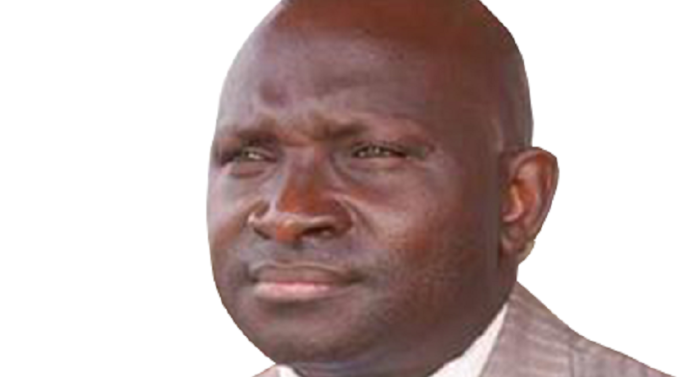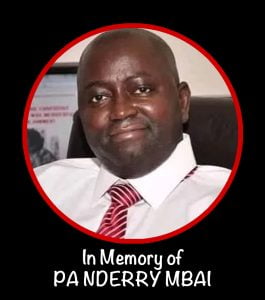
The Plaintiffs’ counsel began her closing arguments by generally supporting the Prosecutor’s case for the conviction of Ousman Sonko for crimes against humanity, particularly in support of her clients who were victims of atrocities in 2000 and 2006.
Pleading on the contextual elements of the crimes against humanity
The argumentation started with a reminder of the Gambian context with a particular focus on the years 2000 to 2006.
| “Between 1994 and the end of 2016, anyone who opposed, wanted to oppose, or was even suspected of opposing the regime risked being arbitrarily arrested, tortured, or otherwise ill-treated. Risked being subjected to sexualized violence. Risked being disappeared. Risked being extrajudicially executed or murdered. Under Jammeh, a construct of interlocking security agencies was established, resulting in a system of ‘joint exercise of power’”. |
There was no doubt that the security agencies of the Gambian state apparatus were working together in a well-coordinated manner and that Yahya Jammeh was not acting alone. During the investigation, Ousman Sonko even stated that there were weekly meetings of the National Security Council to discuss national security issues and that he had participated in these meetings both as Inspector General of Police (IGP) and as Minister of the Interior. The brutal crimes committed in the name of the state took place in a climate of absolute impunity, and the perpetrators were not held accountable, but rather were being rewarded with promotions and favors: the defendant benefited from the system and was promoted.
It was also emphasized that the regime has committed many violations over the years, leading to the conclusion that the civilian population is under attack. The violent suppression of a student rally in April 2000, the attempted assassination of a lawyer critical of the regime in December 2003, the murder of the editor of The Point in December 2004, and the killing of more than 50 West African migrants in July 2005 were cited as examples.
In this case, both the general and the systematic nature of the above-mentioned attack were well established. However, in order to reinforce the general character of the attack, it was emphasized that the Gambian society is highly interconnected due to the small size of the country, but also due to the extended family system and, beyond that, the Gambian social environment. This leads to the conclusion that, in addition to the number of victims, the temporal and geographical elements that support the general character of the attack, each individual crime resulted in a higher number of people affected because of the Gambian social structure.
With regard to the systematic nature of the attacks, it was also emphasized – in addition to the arguments of the prosecutor – that the cooperation between the different services was embedded in the structure of the dictatorship from the very beginning: already in 1997, the PIU and the NIA were involved in the violent repression of UDP members, which led to arrests and acts of torture.
The attacks also targeted certain categories of people, such as journalists and, more generally, the media, from the early years of the regime, which was also highlighted in the findings of the TRRC. It was also important to note that journalists from government-owned newspapers were not spared: persecution of journalists from the Daily Observer was evident throughout the years, for example in 2001 and 2006.
It was therefore clear that the journalists arrested and tortured in March 2006 had been targeted by the regime in connection with their work and their coverage of the coup attempt.
| “In reviewing this testimony and studying the file in general, it became clear that, contrary to the defendant’s assertions, the suppression of the press through the targeted persecution of critical journalists and media outlets was an integral part of the regime’s logic from the very beginning. (…). As a result, the defendant’s attempts to portray the press in The Gambia as supposedly free fall flat. |
With regard to Ousman Sonko’s knowledge of the aforementioned systematic and generalized attacks against the Gambian civilian population, it was emphasized that, although he claimed to have learned of the crimes of the Jammeh regime only through the TRRC or the present proceedings, it was clear from the record and from the testimony heard before the Court that the accused was part of the inner circle of power around the former President from the beginning to almost the end. As highlighted by the Prosecutor, the accused participated in Jammeh’s coup in 1994 and joined the State Guard in 1995. He then gradually rose within the apparatus, becoming IGP without any police training or experience, and eventually reaching the position of Minister of Interior.
| “In court, the accused showed himself to be a man who – despite the knowledge that he can no longer deny after the TRRC and the present proceedings – still supports the repressive policies of the state’s collective of perpetrators today. If the accused today, knowing the extent of the brutality of the regime, still justifies its policies, then I conclude that he was also in agreement with them at the time of the alleged offenses”. |
Given the military and central office positions he held from 1995 to 2016, the accused cannot credibly claim to have been unaware of the gross human rights violations and numerous crimes that took place. The accused could not have occupied key positions of power for years without knowing about such attacks.
Indeed, there is no doubt that the accused was aware of the policy of systematic persecution of real or perceived critics of the regime in the context of his respective position, whether in the military, as IGP or as Minister of the Interior. In September 2016, he left the country as soon as possible after falling out of favor with Jammeh, knowing full well what awaited him in that situation: arbitrary detention, torture, disappearance and/or death.
Arguments on the individual charges
With regard to the murder of a member of the State Guard in January 2000, the representative returned to the testimony of the various witnesses, as well as the testimony of the widow of the deceased – who is a plaintiff in the case – and compared it with the testimony of the accused on these events.
In essence, it was argued that the witnesses – a former member of the State House Battalion and a former Jungler – provided credible information about the planning as well as the operation that led to the killing and in which the defendant was involved. The plaintiff, for her part, provided credible information that was also consistent with the testimony of the witnesses. It was added that the plaintiff commented in great detail, in a coherent and consistent manner, on the events she remembered on the day her husband was lured into an ambush.
Ousman Sonko, for his part, selectively exercised his right to remain silent on these charges, which was not to his advantage. While he told the court that he could not comment due to a duty of confidentiality, he made some isolated statements during the investigation. In particular, he said that the plaintiff was wrong when she stated that he had taken the victim’s position after his death.
It was also emphasized that Ousman Sonko had been identified by the TRRC as part of a collective of perpetrators responsible for this murder.
At the time of the crime, the accused had already been in the army for 12 years and had served in the State Guard since 1995. He was in the same unit as the victim. He knew what he had to do to take his place at the president’s side, and any means were acceptable to him. The killing was part of a list of systematic violations that already existed at the time of the offense, which means that the crime was committed as part of the attack against the civilian population that took place, and no grounds for justification or exclusion of guilt are apparent or have been raised to date.
As requested by the Prosecutor, it was concluded that Ousman Sonko should be convicted of aggravated murder as a crime against humanity, given the atrocity of the acts in question.
With regard to the charges of sexual violence, which Ousman Sonko is accused of having committed on several occasions against the widow of the deceased, the course of events was reconstructed on the basis of credible and consistent statements made by the plaintiff. According to her statements, very soon after the murder of her husband, she lost her job, her children were no longer allowed to enroll in school by order of the Minister of Education, and the defendant began to “search for her”, even during the period of mourning. This was followed by an “intensive phase” of sexual abuse and threats over many months. The sexual assaults continued from mid/end 2000 until late 2001/early 2002, when they increased again. Severe violence occurred again in January 2005 when the plaintiff returned to The Gambia for a short trip.
| “I wouldn’t be here if my client didn’t care about one thing: justice. Justice after all these years. For the murder of her husband. For what was done to her. For what her family, especially her children, have had to go through as a result of the defendant’s actions.” |
Although he never responded in detail to these charges, Ousman Sonko stated that he had not been in the country at the time of the crimes. However, the evidence in the case file showed that he had only been absent twice, each time for one week, making these absences insignificant and of negligible duration, and therefore not convincing.
The events suffered by the plaintiff should lead the Court to find Ousman Sonko guilty of aggravated deprivation of liberty, aggravated torture and aggravated violation of sexual self-determination through rape as crimes against humanity, emphasizing that he acted with the specific intention of punishing or possessing her as the widow of his eliminated opponent. Consequently, the sexualized violence perpetrated by the accused can also be included in the concept of torture.
| “He wanted to intimidate her and forbid her to talk to anyone about what was happening. He wanted information, asking her if she had talked to anyone, if she had applied for asylum in the United States. He wanted to humiliate her. He wanted to dominate her. He wanted to destroy her. In this case, Ousman Sonko undoubtedly had a specific purpose for his actions.” |
According to the available evidence in the case file, Ousman Sonko had a reputation as a “womanizer”, which should be understood as “a man who takes what he wants”, and it was clear from the file that he acted in the exercise of his function or at least by using his power or the resources available to him by virtue of his position. It was also clear that the plaintiff was not an accidental victim, but had been specifically targeted.
For these reasons, the acts in question should not be considered as personal or isolated acts, but as having taken place in the context of the widespread sexualized violence against women during the Jammeh regime.
| “Sexualized violence was used in The Gambia as a targeted means of political repression against dissidents or people accused of having links to a dissident stance. This explicitly affected people of all genders. Sexualized violence targets the innermost core of a person and has the potential – often deliberately used in dictatorships or wars – to destroy individuals and entire communities, perhaps not physically, but psychologically. The systematic use of sexualized violence was part of the assault on civilians in The Gambia from 1994 to the end of 2016”. |
With regard to the allegations of torture and deprivation of liberty made against two journalists – private plaintiffs – in March 2006, it was recalled that both of them had given credible accounts of the events they had experienced, with relevant and accurate details. Their testimony was further corroborated by several pieces of evidence and newspaper articles.
While the accused did not dispute the testimony of the two victims, he denied any knowledge or involvement in these events. In particular, he claimed that his deputy – in coordination with other high-ranking individuals – had been responsible for the deployment of the police after the coup attempt in March 2006. He also denied any responsibility as a member of the Investigation Committee before the prosecutor, although his statements in this regard became vaguer before the court.
| “The defendant’s statements to the court regarding the charges against my clients were characterized by his usual evasiveness and constant elusions: Ousman Sonko had either not seen any violations of the law, could not remember them, or the services under his control were not involved and therefore he was not responsible”. |
The events that the plaintiffs experienced as journalists in March 2006 should lead the Court to find Ousman Sonko guilty of aggravated deprivation of liberty and aggravated torture, as well as aggravated violation of sexual self-determination, as crimes against humanity.
It was emphasized that the electric shocks inflicted on the genitals of one of the plaintiffs should be recognized as a form of torture through sexualized violence. In order to fully reflect the injustice of this gendered aspect of torture, the facts of the case had to be explicitly assessed from this perspective. At the time the plaintiff was subjected to gender-based violence, he was in a state of absolute defenselessness. He was incarcerated and therefore completely restricted in his freedom of movement and at the mercy of his torturers.
| The plaintiffs’ legal representative concluded that Ousman Sonko should be found guilty as charged, should be appropriately punished, and that reparations should be awarded to the three plaintiffs as compensation for the harm suffered. |
Coming next: The closing arguments of the legal representative of the other victims of the 2006 events.


